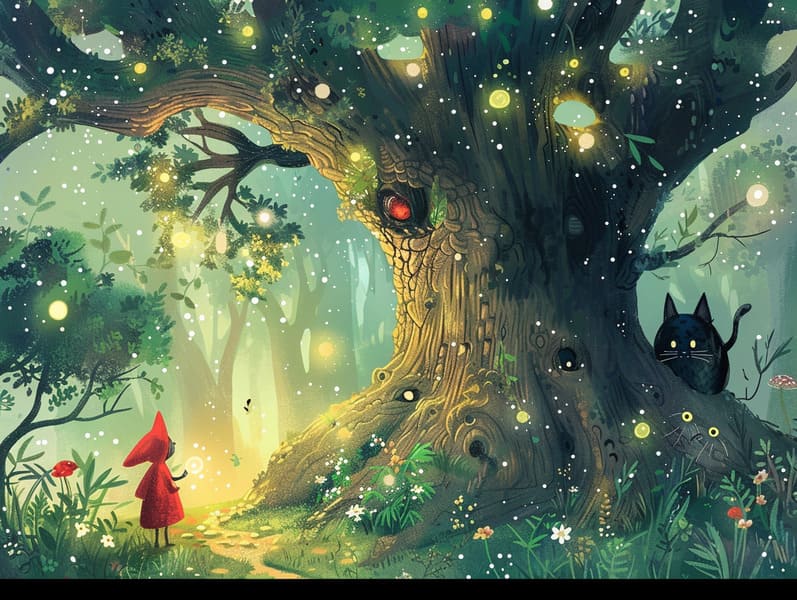The Creation of Grimm's Fairy Tales and Their Invariable Splendor.
The Creation of Grimm's Fairy Tales and Their Invariable Splendor.
Blog Article

Old fairy tales have old origins. These stories have been told from one generation to the next centuries before they were ever inscribed. They were born from a variety of societies, including American traditions. They were initially disseminated among adults, often carrying themes and messages pertaining to the societal norms and beliefs of the time.
The renowned Brothers Grimm, Jacob and Wilhelm, were among the first to collect and release many of these beloved fairy tales. Their published works, "Grimm's Fairy Stories," included stories like "The Story of Cinderella," "The Story of Hansel and Gretel," and "Little Snow White," which have since become classics in the world of timeless fairy tales. Similarly, the Danish author's enchanting fairy tales, such as "The Mermaid," and "The Duckling's Story," have captivated hearts worldwide, establishing their place in the pantheon of treasured fairy tales.
Even though they are old, traditional fairy tales remain as relevant as ever, especially as bedtime stories for kids. These charming stories are now available in numerous formats, including artistically illustrated books, delightful animations, and web-based fairy tales.
Their unwavering allure can be connected to several captivating elements:
Life Lessons: Traditional fairy tales often convey important moral lessons. Tales like "The Tale of the Boy Who Cried Wolf" teach the importance of truthfulness, while "The Hare and the Tortoise" highlight the merits of steadfastness and humbleness. These narratives offer kids clear distinctions between correct and incorrect, building their moral compass in a subtle yet meaningful way.
Empathy and Understanding: Old fairy tales frequently include characters facing struggles and tests, stimulating listeners to sympathize with their struggles and applaud their triumphs. For instance, "The Story of Beauty and the Beast" reveals the necessity of looking beyond appearances to see the true being of a character, encouraging tenderness and understanding.
Cultural Awareness: Many fairy tales are imbued with the cultural contexts from which they bloomed. Reading these fairy tales can provide informative snapshots into different ways of life, enhancing a sense of cultural respect and comprehension.
Imagination and Creativity: The extraordinary elements in ancient fairy tales—fairy godmothers—boost children’s dreaming abilities. These fairy tales bring readers to mythical realms, stimulating imaginative thinking and a sense of enchantment that stays a lifetime.
Timeless fairy tales are not only magical but also didactic. They serve as bewitching tools in advancing various cognitive and affective skills in little ones. When old fairy tales are recited, they cultivate language acquisition by presenting new vocabulary and elaborate sentence structures. This practice also advances listening skills and focus, as young ones track the narrative, keen to see what happens next.
Furthermore, conversing about the themes and characters of old fairy tales can cultivate thought processes and reasoning skills. Young readers are instructed to identify patterns, foresee events, and get cause and effect. These debates also contribute to children express their thoughts and feelings, fostering their emotional intelligence.
In today’s technological age, the availability of online fairy tales has made these narratives more obtainable than ever. Internet sites and apps give comprehensive collections of ancient fairy tales that can be browsed or listened to anytime, anywhere. Fairy tales recited are particularly popular, offering an entertaining method for young readers to be a part of these entrancing tales. Narrated books and read-out-loud videos carry characters and settings to life, often paired with captivating melodies and songs that boost the story journey.
The timeless fascination of old fairy tales lies in their ability to change to today's world while keeping hold of their core messages. Contemporary takes of these narratives often introduce more varied characters and modern settings, making them relevant to today’s audience. However, the key lessons of guts, humanity, and lawfulness remain unchanged, continuing to move listeners of all ages.
Fairy tales also offer a sense of peace and understanding. They make accessible a systematic narrative with a obvious beginning, middle, and end, often coming to a close click here with the wrap-up of conflicts and the triumph of justice over injustice. This assuredness can be easing for little ones, showcasing a sense of unchangeability in an unpredictable world.
Old fairy tales continue to fascinate and coach new generations, maintaining their magic and meaningfulness in modern society. As bedtime stories for kids, they serve a perfect blend of enchantment and education, fostering moral values, empathy, and creativity. The existence of digital storybooks and the widespread nature of fairy tales narrated ensure that these ancient tales remain obtainable to new generations.
By holding onto and making known these stories, we continue to treasure the rich tapestry of cultural legacy and cultural heritage. Whether you are accessing a gorgeously illustrated book, exploring a online library, or hearing an voice book, the attraction of children's fairy tales is always within reach. These stories highlight of the unfading nature of narratives and its ability to gather us across time and space.
Be it you are browsing a vividly illustrated book, exploring a virtual collection, or listening on an audiobook, the loveliness of classic fairy tales is always within reach.
These stories show us of the endless essence of fairy tales and its ability to connect us across generations and cultures, making a tie that charms and informs alike.